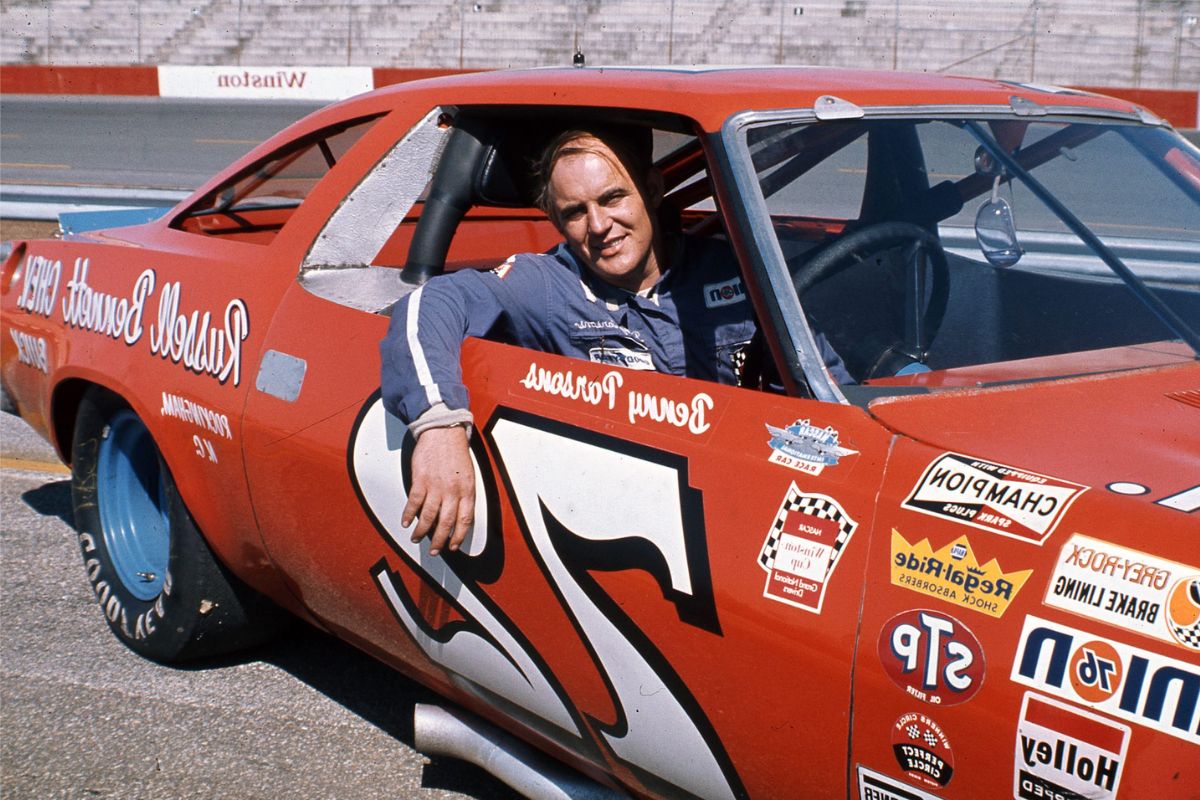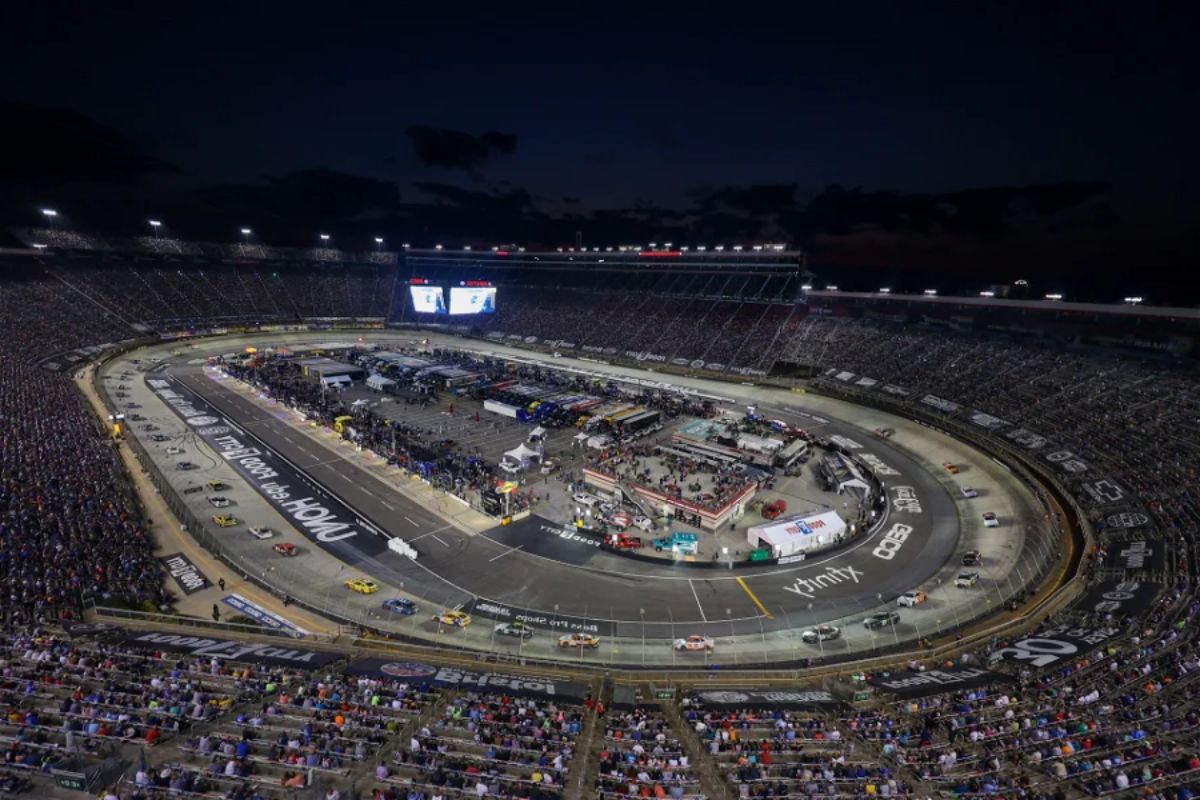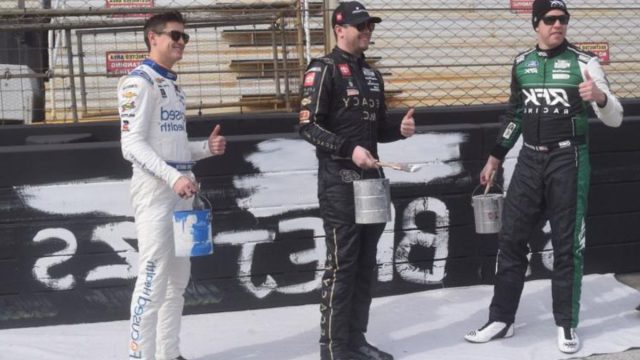Bristol Red and White Wall Return: Returning to Bristol’s iconic red and white walls is more than just a fresh coat of paint for NASCAR. The revival of this classic look signifies a nod to the sport’s rich history, evoking nostalgia for both drivers and fans alike.
However, this change isn’t just about aesthetics; it also hints at potential shifts in NASCAR’s approach. Wet weather testing and adaptations in response to changing conditions point towards a broader strategy that the organization is pursuing.
Join us as we explore how these seemingly simple color choices could be indicative of larger developments within the NASCAR community.
Key Takeaways
- Bristol Motor Speedway’s revival of the iconic red and white walls evokes nostalgia among fans and honors the track’s storied past.
- NASCAR Cup Series drivers actively participate in repainting efforts, blending modern unity with historical traditions.
- The return to the classic concrete surface at Bristol enhances the fan experience and excitement for fast-paced racing.
- NASCAR’s focus on wet weather solutions and safety improvements at Bristol reflects a commitment to performance in adverse conditions.
Concrete Comeback at Bristol
Amidst the anticipation for the upcoming Food City 500 on March 17, the Bristol Motor Speedway is making a notable shift back to its iconic concrete surface for the race. This change marks a significant moment for NASCAR fans as the track sheds its dirt surface, bringing back the classic feel of racing on concrete.
The decision to return to the concrete surface has sparked excitement among drivers and fans alike. Three NASCAR Cup Series drivers, Brad Keselowski, Erik Jones, and Zane Smith, shared their enthusiasm during a recent test session. They highlighted the unique challenges and thrills that come with racing on Bristol’s concrete track, emphasizing the skill and precision required to navigate its unforgiving surface.
As the countdown to the Food City 500 continues, the return to concrete at Bristol Motor Speedway adds an extra layer of nostalgia and excitement to an already highly anticipated event. Fans can look forward to witnessing fast-paced, action-packed racing on the iconic red and white walls that have become synonymous with this historic track.

Drivers Join the Paint Party
With the return to the classic concrete surface at Bristol Motor Speedway for the upcoming Food City 500 reigniting nostalgia in NASCAR fans, drivers have added their own touch to the iconic track by joining in the paint party.
In a nod to the historic red and white colors that adorned the walls of Bristol in the early ’90s, Cup Series drivers took part in a wet weather test session. As part of this process, drivers from various manufacturers grabbed paintbrushes and contributed to the revamp by applying white paint to the frontstretch walls.
The sight of these modern-day racing stars actively participating in the painting of the walls has not only brought a sense of nostalgia but also a feeling of unity and collaboration among the drivers. It’s a unique blend of honoring the past while embracing the present, showcasing the deep respect drivers have for the history and traditions of the sport as they prepare to take on the challenges of the revamped Bristol Motor Speedway.
Reviving a Classic Look
Embracing the heritage of Bristol Motor Speedway, the revival of the classic red and white walls pays homage to the track’s storied past while igniting excitement among NASCAR enthusiasts. This nod to nostalgia brings back memories of the first Food City 500 in 1992, where these iconic colors made their mark on the track. Here are five reasons why the return of the red and white walls is creating a buzz in the NASCAR community:
- Historical Significance: The colors harken back to a pivotal moment in Bristol’s racing history, evoking feelings of nostalgia for long-time fans.
- Recreating Iconic Moments: By reintroducing the classic look, the track aims to recreate the magic of past races and iconic moments that fans cherish.
- Enhanced Fan Experience: The retro touch adds a layer of excitement and familiarity for fans, enhancing their overall experience at the Speedway.
- Track President’s Insight: Track president Jerry Caldwell’s involvement in the decision-making process underscores the importance of this fun touch for fans.
- Wow Factor: The vibrant red and white walls are sure to ‘wow’ spectators and drivers alike, adding to the thrill of the racing experience at Bristol.

Wet Weather Testing and Changes in NASCAR
The evolution of Bristol Motor Speedway goes beyond aesthetics, serving as a pivotal testing ground for NASCAR’s forthcoming changes in wet weather racing, notably the introduction of wet weather tires in the 2024 season. This move will replace existing measures like wipers and rain flaps, aiming to enhance safety and performance in adverse weather conditions. The Bristol concrete track’s unique characteristics make it an ideal venue for assessing the feasibility and effectiveness of this revised wet weather package.
| Testing Aspect | Purpose | Location |
|---|---|---|
| Wet Weather Tires | Evaluate Performance | Bristol Track |
| Water Drainage Systems | Ensure Track Safety | Pit Road Area |
| Driver Feedback | Refine Tire Design | Garage Area |
| Track Grip Levels | Optimize Tire Traction | Turns 1-2 |
NASCAR’s Push for Wet Weather Solutions
NASCAR’s pursuit of effective wet weather solutions underscores the sport’s unwavering commitment to enhancing safety and performance standards in adverse conditions. As NASCAR pushes for innovations in wet weather management, here are some key aspects to consider:
- Development of Wet Weather Tires: Investing in specialized tires designed to provide optimal grip in rainy conditions.
- Enhanced Driver Training: Implementing programs to equip drivers with the skills needed to navigate wet tracks safely.
- Improved Track Drainage Systems: Upgrading circuits with superior drainage to minimize water buildup on the track.
- Strategic Race Scheduling: Adjusting the calendar to mitigate the impact of weather-related disruptions on race weekends.
- Collaboration with Meteorological Experts: Working closely with weather professionals to enhance forecasting accuracy and preemptively plan for adverse conditions.
These initiatives not only showcase NASCAR’s adaptability but also underscore its commitment to delivering thrilling races while prioritizing safety and performance excellence in all weather scenarios.

Conclusion of Bristol Red and White Wall Return
Bristol’s red and white wall return signifies a nostalgic nod to NASCAR’s past. The drivers participating in the paint party and the revival of this classic look show a deep appreciation for the sport’s history.
With wet weather testing ongoing and NASCAR’s push for solutions, the future of racing looks promising. The concrete comeback at Bristol represents a blend of tradition and innovation that fans can look forward to.
Our Reader’s Queries
Q. What is special about Bristol Motor Speedway?
A. Bristol Motor Speedway holds the distinction of being the fourth-largest sports venue in America and the tenth largest globally, with a seating capacity of up to 146,000 people. While the speeds at Bristol are comparatively lower than those on typical NASCAR oval tracks, they remain exceptionally fast for a short track due to the venue’s high banking. The unique characteristics of Bristol Motor Speedway contribute to its status as a significant and thrilling location within the NASCAR racing circuit.
Q. Why is Bristol Motor Speedway called the Last Great Colosseum?
A. Situated in Northeast Tennessee, in the town of Bristol, Bristol Motor Speedway is a legendary NASCAR short-track renowned for its epic battles and Roman-like architecture. Affectionately nicknamed “The Last Great Colosseum,” the venue captures the spirit of intense competition and historic racing moments, making it a cherished and iconic location within the world of NASCAR.
Q. Why is it so loud at Bristol Motor Speedway?
A. Bristol Motor Speedway’s distinctive construction has earned it the reputation of being the loudest track in NASCAR. Despite its compact 0.533-mile length, the grandstands at Bristol ascend to the equivalent of 21 stories, effectively containing and amplifying the noise within the track. This unique design contributes to the unparalleled and thunderous atmosphere that makes Bristol Motor Speedway a standout venue in the world of NASCAR.
Q. How big is Bristol Motor Speedway?
A. Bristol Motor Speedway’s footprint extends across more than 500 acres of the surrounding area. The short track is a concrete oval with a length of 0.533 miles. It features corner banking ranging from 24 to 28 degrees, providing a challenging and dynamic racing environment. The track includes a pair of 650-feet straightaways, contributing to the unique characteristics that make Bristol Motor Speedway a renowned venue in the world of motorsports.
ALSO READ: Facts About Bristol Motor Speedway: Unraveling Nascar’s Last Great Colosseum
